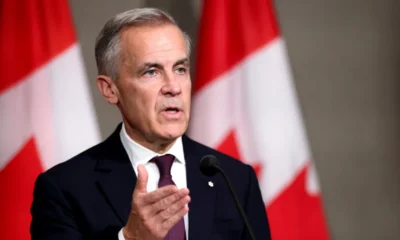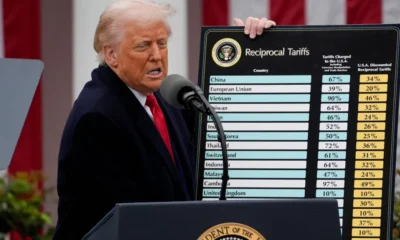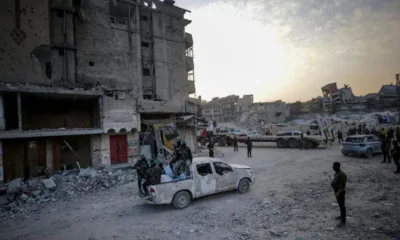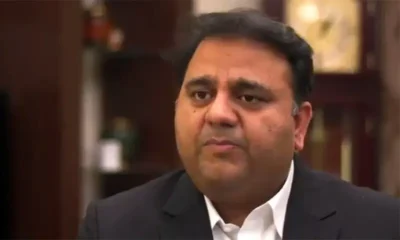American News
Trump’s Gaza Blueprint Unfolds

Paris (Imran Y. CHOUDHRY) :- Former Press Secretary to the President, Former Press Minister to the Embassy of Pakistan to France, Former MD, SRBC Mr. Qamar Bashir analysis : In early 2025, President Donald Trump unveiled one of the most controversial and shocking proposals in modern Middle Eastern history: a plan to forcibly relocate nearly two million Palestinians from Gaza and the West Bank to neighboring Arab countries and turn Gaza into what he called the “Riviera of the Middle East.” Standing alongside Israeli Prime Minister Benjamin Netanyahu, Trump described this plan as an “opportunity” for Palestinians to live elsewhere while Israel would retain full control of Gaza, the West Bank, and Jerusalem. Netanyahu strongly endorsed the vision, calling it “free choice” for Palestinians, but global human rights organizations and numerous governments immediately recognized it for what it truly was—a blueprint for mass displacement and the erasure of Palestinian identity. Arab nations, including Jordan and Egypt, rejected the plan outright, calling it “unrealistic, immoral, and illegal,” while international observers compared it to historical examples of ethnic cleansing and warned that implementing such a policy would constitute a grave violation of international law.
The proposal became a political fault line that deepened existing divisions while simultaneously fueling the already volatile situation on the ground. When Palestinians refused to leave their ancestral homes, Israel intensified its military operations in Gaza and parts of the West Bank. As the offensive escalated, the human toll became catastrophic. Verified figures from multiple independent sources, including the United Nations and major news agencies, confirm that more than 60,000 Palestinians have been killed so far, with tens of thousands more wounded or permanently disabled. Among them are thousands of children whose lives were cut short and countless families torn apart. Hospitals, schools, and residential neighborhoods have been reduced to rubble, leaving survivors without shelter, medical care, or hope for stability. Gaza, already one of the most densely populated areas in the world, now faces near-total devastation. The destruction of its infrastructure has created a humanitarian catastrophe, with shortages of food, clean water, and electricity, alongside widespread starvation and disease. Despite growing international pressure, Israel continues its operations largely with impunity, confident of Washington’s unwavering political and financial backing.
What makes this moment profoundly alarming is not just the scale of destruction but the alignment of global powers enabling it. Netanyahu’s government views this offensive as a historical opportunity to annex and expand illegal settlements across Gaza and the West Bank, effectively erasing the possibility of a future Palestinian state. Israel’s finance minister Bezalel Smotrich has openly stated that the approval of settlement construction in the sensitive E1 corridor, east of Jerusalem, will “bury forever the idea of Palestinian statehood.” This controversial settlement project, covering nearly 12 square kilometers, would split the West Bank into disconnected northern and southern zones, making territorial continuity impossible. Despite this blatant defiance of international law, Israel secured silent complicity from the U.S. administration, which has refused to intervene and continues to provide military aid and diplomatic cover.
But while Trump’s administration appears satisfied that elements of its relocation vision are unfolding, the global backlash has been unprecedented. In a rare show of unity, twenty-one countries, including Australia, the United Kingdom, France, Canada, Italy, Spain, and Sweden, issued a joint statement condemning Israel’s settlement plans and declaring them a “flagrant violation of international law.” These nations further demanded that Israel halt construction immediately and allow unrestricted humanitarian access into Gaza. Australia, in particular, emerged as a surprising leader among Western countries. Prime Minister Anthony Albanese’s government not only condemned Israel’s actions but also announced conditional recognition of a Palestinian state, joining a growing coalition of nations willing to defy U.S. and Israeli pressure. In an even bolder move, Canberra canceled the visa of far-right Israeli lawmaker Simcha Rothman, citing inflammatory remarks, which triggered retaliatory action from Israel, including revoking the residency visas of Australian diplomats assigned to the Palestinian Authority. Despite Netanyahu’s personal attacks labeling Albanese “weak” and accusing him of “betraying Israel,” the Australian government stood firm, underscoring its commitment to humanitarian principles over political expediency.
Equally significant has been the role of European countries, many of which have quietly broken away from Washington’s long-standing alignment with Israeli policy. The joint condemnation of settlement expansion, combined with growing calls for an arms embargo, represents a notable shift in Western diplomacy. These nations have prioritized international law and human rights over geopolitical convenience, risking trade disruptions, diplomatic backlash, and influence from powerful pro-Israel lobbies. Their recognition of Palestinian statehood and coordination of humanitarian aid pipelines mark a decisive moment in global politics: a willingness to prioritize justice over fear.
However, what remains most heartbreaking is the near-total silence from many Muslim-majority countries. While Jordan and Egypt firmly rejected Trump’s relocation plan and proposed alternative reconstruction frameworks, the broader Muslim world has offered little beyond statements of sympathy. Despite representing nearly two billion people and controlling immense financial, political, and energy resources, these governments have largely avoided taking tangible steps such as imposing economic sanctions, severing trade, withdrawing ambassadors, or leveraging international forums to isolate Israel diplomatically. For Palestinians under siege, this silence has become a source of profound disillusionment. They have watched as Christian-majority nations like Australia, Ireland, Spain, and Norway have risked their alliances and economic interests to condemn Israel’s actions, while many Muslim capitals have remained passive spectators to the destruction of Gaza.
The hypocrisy deepens when viewed against the backdrop of global public opinion. Massive protests have erupted across Europe, North America, and Latin America, with millions marching to demand an end to Israeli attacks and calling for justice for Palestinians. Social media movements amplifying calls for boycott, divestment, and sanctions have gained unprecedented traction, putting increasing pressure on Western governments. Yet, Muslim leaders—despite being historically viewed as guardians of Palestinian rights—have avoided leveraging their collective influence on the global stage, citing domestic instability, economic vulnerability, or geopolitical alliances. This silence has left Palestinians feeling politically abandoned, not only by their adversaries but by their own supposed allies.
The figures paint an undeniable picture. Over two million people in Gaza remain trapped in what experts describe as the world’s largest open-air prison. More than 60,000 are dead, hundreds of thousands wounded, and over 80% of Gaza’s population displaced. Entire families have been wiped out. The Israeli E1 settlement plan threatens to divide the West Bank permanently, effectively eliminating the possibility of a contiguous Palestinian state. The combined impact of military aggression, illegal land annexations, forced displacement proposals, and blockade-induced starvation amounts to what international rights groups describe as collective punishment on an unprecedented scale.
And yet, amidst this tragedy, glimmers of hope remain. Australia’s bold defiance and the growing list of nations recognizing Palestine represent cracks in the seemingly unshakable wall of impunity Israel has enjoyed for decades. The collective action of 21 countries in challenging illegal settlements shows that alliances are shifting, even if slowly. These countries have demonstrated that moral courage can coexist with diplomacy and that choosing humanity over expediency carries weight on the international stage.
Still, history will not only remember the oppressors and the victims but also those who stood silent when their voices were most needed. While Netanyahu pursues his vision of territorial expansion and Trump celebrates the partial implementation of his relocation plan, the burden of conscience now rests on the global community. The lesson is painfully simple: neutrality in the face of oppression always favors the oppressor. The failure of powerful Muslim states to mobilize meaningful resistance has left an indelible scar on the collective identity of the Muslim world and a haunting question for generations to come: when Gaza cried for help, why was the silence louder than the bombs?
The Gaza crisis has transcended borders, religions, and political ideologies. It is no longer about negotiations between two adversaries; it is about humanity’s willingness to defend the right to exist, the right to dignity, and the right to justice. Every government, every institution, and every individual faces a choice between complicity and courage. History will record the nations that risked alliances, economic interests, and political capital to uphold international law, and it will equally remember those that turned away. As images of starving children, destroyed neighborhoods, and grieving families continue to emerge, the call to conscience grows louder.
The time to act is now. The responsibility does not rest solely on the shoulders of Palestinians or their immediate neighbors—it belongs to the entire world. The struggle in Gaza is not a local issue; it is a global moral reckoning. A future built on dispossession and death cannot bring security or peace to anyone, not Israelis, not Palestinians, not the wider world. Justice must rise above power, and humanity must triumph over indifference, or else the Gaza tragedy will be remembered not only for its suffering but for the silence that allowed it to happen.
American News
Conservative justices sharply question Trump tariffs in high stakes hearing
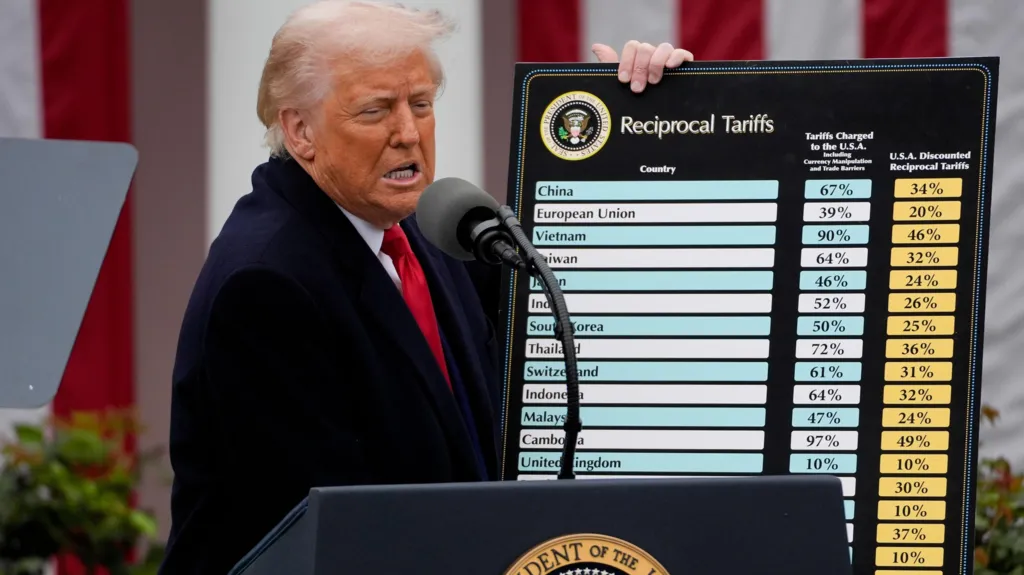
Donald Trump’s sweeping use of tariffs in the first nine months of his second term was sharply questioned during oral arguments before the Supreme Court on Wednesday.
Chief Justice John Roberts, and justices Amy Coney Barrett and Neil Gorsuch – three conservative jurists considered swing votes in this case – peppered US Solicitor General John Sauer, representing the president’s administration before the court.
They were joined by the court’s three liberal justices, who also expressed scepticism about whether federal law – and the US Constitution – give the president authority to unilaterally set tariff levels on foreign imports.
“The justification is being used for power to impose tariffs on any product from any country in any amount, for any length of time,” Roberts said.
If the court ruled for Trump in this case, Gorsuch wondered: “What would prohibit Congress from just abdicating all responsibility to regulate foreign commerce?”
He added that he was “struggling” to find a reason to buy Sauer’s arguments.
In a possible sign of case’s complexities, the hearing stretched almost three hours – far longer than the time formally allotted.
Arguing over ‘country-killing’ crises
The case centres around a 1977 law, the International Emergency Economic Powers Act (IEEPA), that Trump’s lawyers have said gives the president the power to impose tariffs. Although the Constitution specifically vests Congress with tariff authority, Trump has claimed that the legislature delegated “emergency” authority to him to bypass longer, established processes.
Sauer asserted that the nation faced unique crises – ones that were “country-killing and not sustainable” – that necessitated emergency action by the president. He warned that if Trump’s tariff powers were ruled illegal, it would expose the US to “ruthless trade retaliation” and lead to “ruinous economic and national security consequences”.
Trump first invoked IEEPA in February to tax goods from China, Mexico and Canada, saying drug trafficking from those countries constituted an emergency.
He deployed it again in April, ordering levies from 10% to 50% on goods from almost every country in the world. This time, he said the US trade deficit – where the US imports more than it exports – posed an “extraordinary and unusual threat”.
Those tariffs took hold in fits and starts this summer while the US pushed countries to strike “deals”.
Lawyers for the challenging states and private groups have contended that while the IEEPA gave the president power to regulate trade, it made no mention of the word “tariffs”.
Neil Katyal, making the case for the private businesses, said it was “implausible” that Congress “handed the president the power to overhaul the entire tariff system and the American economy in the process, allowing him to set and reset tariffs on any and every product from any and every country, at any and all times”.
He also challenged whether the issues cited by the White House, especially the trade deficit, represent the kind of emergencies the law envisioned.
Suppose America faced the threat of war from a “very powerful enemy”, Samuel Alito, another conservative justice, asked. “Could a president under this provision impose a tariff to stave off war?”
Katyal said that a president could impose an embargo or a quota, but a revenue-raising tariff was a step too far.
For Sauer, this was a false choice. Presidents, he said, have broad powers over national security and foreign policy – powers that the challengers want to infringe on.
Tariffs v taxes
A key question could be whether the court determines whether Trump’s tariffs are a tax.
Several justices pointed out that the power to tax – to raise revenue – is explicitly given to Congress in the Constitution.
Sauer’s reply was that Trump’s tariffs are a means of regulating trade and that any revenue generated is “only incidental”.
Of course, Trump himself has boasted about the billions his tariffs have generated so far and how essential this new stream of funding is to the federal government.
The justices spent very little time on questions about refunds or whether the president’s emergency declarations were warranted. Instead they spent most of their time examining the text of IEEPA and its history.
Sauer urged them to understand tariffs as a natural extension of other powers granted to the president under the law rather than a tax. “I can’t say it enough – it is a regulatory tariff, not a tax,” he said.
But that appeared to be a stumbling block for many of the justices.
“You want to say that tariffs are not taxes but that’s exactly what they are,” Justice Sotomayor said.
Many seemed persuaded by arguments from the business and states that tariffs, as a tax paid by US businesses, were fundamentally different from the other kinds of powers addressed by the law.
But not all.
Justice Kavanaugh expressed doubts on that point toward the end of the hearing, saying it didn’t seem to very “common sense” to give the president the power to block trade entirely, but not impose a 1% tariff, sugggesting it left a gap like a donut hole.
“It’s not a donut hole. It’s a different kind of pastry,” Gutman responded, drawing chuckles in the crowd.
What the court’s ruling could do
Treasury Secretary Scott Bessent, who attended the hearing, made no comment when asked by the BBC what he thought of the hearing. Secretary of Commerce Howard Lutnick, also in court, flashed a thumbs-up.
US Trade Envoy Jamieson Greer was in court, along with Minnesota Senator Amy Klobuchar, who said outside after arguments that she was “hopeful” based on the questions asked that the court would overturn the tariffs.
“I thought they were very good questions,” she said, describing tariffs as an “unconstitutional power grab” by the president.
The hearing drew a full audience, with press pushed into overflow seats behind columns.
If a majority of the Supreme Court rules in Trump’s favour, it will overturn the findings of three lower courts that already ruled against the administration.
The decision, no matter how it works out, has implications for an estimated $90bn worth of import taxes already paid – roughly half the tariff revenue the US collected this year through September, according to Wells Fargo analysts.
Trump officials have warned that sum could swell to $1tn if the court takes until June to rule.
During oral arguments, Barrett grappled with the question of reimbursing such revenue, wondering if it would be a “complete mess”.
Katyal responded by saying that small businesses might get refunds, but bigger companies would have to follow “administrative procedures”. He admitted that it was a “very complicated thing”.
In remarks on Wednesday, press secretary Karoline Leavett hinted that the administration already is looking at other ways to impose tariffs if the Supreme Court rules against them.
“The White House is always preparing for Plan B,” she said. “It would be imprudent of the president’s advisors not to prepare for such a situation.”
American News
Canada Ad That Rattled Trump
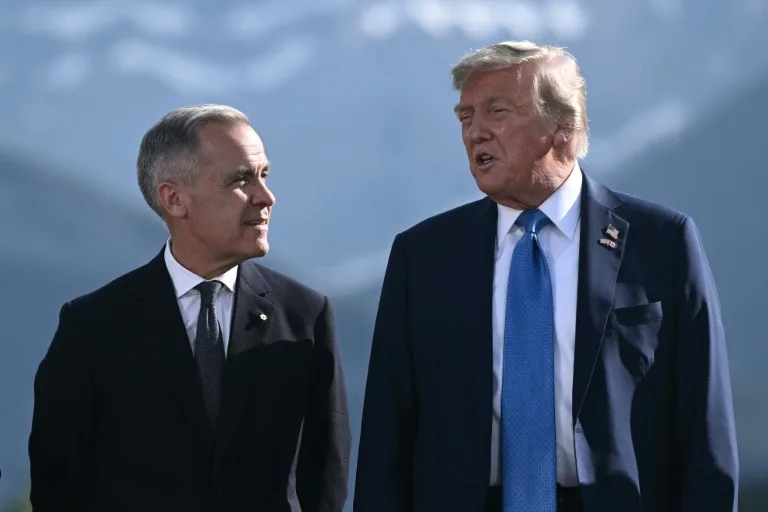
Paris (Imran Y. CHOUDHRY) :- Former Press Secretary to the President, Former Press Minister to the Embassy of Pakistan to France, Former MD, SRBC Mr. Qamar Bashir analysis : In October 2025, a seemingly harmless Canadian public-service announcement featuring Ronald Reagan’s 1987 speech on tariffs ignited an international political storm. What began as a provincial media campaign by Ontario quickly escalated into a full-blown trade confrontation with the United States—one that exposed the fragility of U.S.–Canada relations in the Trump era and the fine line between political messaging and economic provocation.
The ad opened with archival footage of Reagan declaring, “Protectionism is destructionism. Tariffs and quotas are barriers that protect the few at the expense of the many.” The message, originally delivered at the height of the Cold War, was reinterpreted by Ontario’s communications bureau as a critique of modern tariff nationalism. The closing frame read, “Free trade built North America. Tariffs break it.” The timing was deliberate. It aired just days after President Donald J. Trump announced a 5% tariff increase on Canadian steel, aluminum, and agricultural imports—part of his renewed “America First Fair Trade” agenda.
For Trump, the ad wasn’t merely a disagreement over policy; it was personal. The president viewed the Reagan montage as a deliberate distortion of a conservative icon’s legacy—one that painted Trump as an economic isolationist rather than a nationalist reformer. Within hours of the broadcast, the White House communications team condemned the ad as “foreign political interference in U.S. policy discourse.” Trump himself took to Truth Social, writing: “Fake Reagan quotes, fake Canada leadership. We’re done talking until they apologize. New tariffs coming.”
The fallout was swift. Trump’s administration suspended ongoing trade negotiations aimed at refining the U.S.–Canada Economic Partnership Framework. He ordered a 10% across-the-board tariff increase on all Canadian imports, including automotive parts, lumber, dairy, and consumer goods. For two economies intertwined through $800 billion in annual trade, the move sent shockwaves through industries on both sides of the border. Trucking associations, small exporters, and retail chains immediately warned that price hikes were inevitable before the 2025 holiday season.
In Ottawa, Prime Minister Mark Carney acted quickly to contain the crisis. Although the advertisement originated from Ontario’s provincial government rather than the federal cabinet, Trump’s reaction forced Ottawa to intervene. In a carefully worded statement, Carney expressed “regret for any misunderstanding” and emphasized that “the ad does not reflect Canada’s federal stance on U.S. trade policy.” According to The Washington Post, Carney even reached out to Trump personally to offer an apology—an unusual act in modern diplomacy that underscored how high the stakes were.
Trump acknowledged the apology publicly but refused to lift the suspension of trade talks. “I appreciate Prime Minister Carney’s words,” he said during a Mar-a-Lago press briefing. “But actions speak louder than apologies. We’ll see if Canada really wants fair trade—not propaganda.”
The ad’s creators defended their intent, claiming it was meant to “highlight the historical value of free trade” rather than criticize Trump personally. Yet political analysts in both countries saw it as a textbook case of how symbolic gestures can spiral into real-world consequences. “Reagan’s words were about global cooperation against communism, not about contemporary tariff disputes,” explained Professor Samuel Pritchard of the University of Toronto. “Re-contextualizing them during an active negotiation with a protectionist White House was politically reckless, even if rhetorically clever.”
Canadian citizens were deeply divided. Some praised Ontario for “standing up for free trade principles,” seeing it as a proud reaffirmation of Reagan-era conservatism and cross-border partnership. Others accused the provincial government of jeopardizing livelihoods for political theater. Social-media platforms were soon flooded with hashtags such as #ReaganAdGate and #TariffWarNorth. Polls conducted by the Toronto Star indicated that 42% of Canadians supported the ad, while 47% thought it was ill-timed and diplomatically irresponsible.
For small business owners in Ontario and Quebec, the timing could not have been worse. Tariff hikes immediately disrupted auto-parts exports and timber shipments. The Canadian Chamber of Commerce estimated losses exceeding $2.4 billion within the first two weeks of the new tariff regime. The Toronto Stock Exchange saw its manufacturing index fall by nearly 4% in a single day—its steepest drop since early 2023.
In the United States, the political narrative was equally polarized. Trump’s supporters hailed the move as evidence of his “uncompromising defense of American workers,” while his critics accused him of hypersensitivity and using trade policy to punish political speech abroad. Several U.S. senators from border states, including Michigan and New York, quietly urged the administration to de-escalate, citing mounting pressure from local businesses dependent on cross-border supply chains.
Mark Carney’s apology, intended as a pragmatic gesture, triggered heated debate in Canada’s Parliament. Opposition leader Pierre Poilievre accused the prime minister of “bowing to American intimidation” and undermining Canadian sovereignty. Carney countered that leadership demanded “preventing a rhetorical dispute from turning into an economic war.” His cautionary tone reflected the grim reality that Canada could ill afford another prolonged tariff standoff, especially after years of global inflation and energy-price volatility.
Meanwhile, the United States began leveraging the dispute in broader trade negotiations with Europe and Mexico, signaling that Washington was prepared to use tariffs not merely as economic tools but as instruments of political discipline. Analysts warned that such tactics risked eroding trust even among America’s closest allies. The Reagan-ad episode, they argued, revealed how fragile diplomatic etiquette had become in an era of social-media-driven politics and impulsive leadership.
For historians, the irony was impossible to miss. Ronald Reagan—whose words were meant to defend free markets—had unintentionally become the centerpiece of a 21st-century trade war. The contrast between Reagan’s optimism and Trump’s transactional realism encapsulated a profound shift in American conservatism: from a belief in open exchange to a strategy rooted in economic nationalism and leverage.
The “Reagan Ad Affair,” as international media dubbed it, may one day be remembered less for its economic cost and more for its symbolic power. It captured a moment when an old speech from the Cold War could still shake the foundations of modern diplomacy—when images, not policies, defined the fate of nations. In an age where political theater travels faster than policy restraint, one provincial ad in Canada became a global lesson in the perilous intersection of media, ego, and economics.
American News
Trump’s planned tests are ‘not nuclear explosions’, US energy secretary says

The US is not planning to conduct nuclear explosions, Energy Secretary Chris Wright has said, calming global concerns after President Donald Trump called on the military to resume weapons testing.
“These are not nuclear explosions,” Wright told Fox News on Sunday. “These are what we call non-critical explosions.”
The comments come days after Trump wrote on Truth Social that he had directed defence officials to “start testing our nuclear weapons on an equal basis” with rival powers.
But Wright, whose agency oversees testing, said people living in the Nevada desert should have “no worries” about seeing a mushroom cloud.
“Americans near historic test sites such as the Nevada National Security Site have no cause for concern,” Wright said. “So you’re testing all the other parts of a nuclear weapon to make sure they deliver the appropriate geometry, and they set up the nuclear explosion.”
Trump’s comments on Truth Social last week were interpreted by many as a sign the US was preparing to restart full-scale nuclear blasts for the first time since 1992.
In an interview with 60 Minutes on CBS, which was recorded on Friday and aired on Sunday, Trump reiterated his position.
“I’m saying that we’re going to test nuclear weapons like other countries do, yes,” Trump said when asked by CBS’s Norah O’Donnell if he planned for the US to detonate a nuclear weapon for the first time in more than 30 years.
“Russia’s testing, and China’s testing, but they don’t talk about it,” he added.
Russia and China have not carried out such tests since 1990 and 1996 respectively.
Pressed further on the topic, Trump said: “They don’t go and tell you about it.”
“I don’t want to be the only country that doesn’t test,” he said, adding North Korea and Pakistan to the list of nations allegedly testing their arsenals.
On Monday, China’s foreign ministry denied conducting nuclear weapons tests.
As a “responsible nuclear-weapons state, China has always… upheld a self-defence nuclear strategy and abided by its commitment to suspend nuclear testing”, spokeswoman Mao Ning said at a regular press conference in Beijing.
She added that China hoped the US would “take concrete actions to safeguard the international nuclear disarmament and non-proliferation regime and maintain global strategic balance and stability”.
On Thursday, Russia too denied it had carried out nuclear tests.
“Regarding the tests of Poseidon and Burevestnik, we hope that the information was conveyed correctly to President Trump,” Kremlin spokesman Dmitry Peskov told journalists, referencing the names of Russian weapons. “This cannot in any way be interpreted as a nuclear test.”
North Korea is the only country that has carried out nuclear testing since the 1990s – and even Pyongyang announced a moratorium in 2018.
The exact number of nuclear warheads held by each country is kept secret in each case – but Russia is thought to have a total of about 5,459 warheads while the US has about 5,177, according to the Federation of American Scientists (FAS).
The US-based ACA gives slightly higher estimates, saying America’s nuclear stockpile sits at about 5,225 warheads, while Russia has approximately 5,580.
China is the world’s third largest nuclear power with about 600 warheads, France has 290, the United Kingdom 225, India 180, Pakistan 170, Israel 90 and North Korea 50, the FAS says.
According to US think tank Center for Strategic and International Studies (CSIS), China has roughly doubled its nuclear arsenal in the past five years and is expected to exceed 1,000 weapons by 2030.
-

 Europe News8 months ago
Europe News8 months agoChaos and unproven theories surround Tates’ release from Romania
-

 American News8 months ago
American News8 months agoTrump Expels Zelensky from the White House
-

 American News8 months ago
American News8 months agoTrump expands exemptions from Canada and Mexico tariffs
-

 American News8 months ago
American News8 months agoZelensky bruised but upbeat after diplomatic whirlwind
-

 Art & Culture8 months ago
Art & Culture8 months agoThe Indian film showing the bride’s ‘humiliation’ in arranged marriage
-

 Art & Culture8 months ago
Art & Culture8 months agoInternational Agriculture Exhibition held in Paris
-

 Politics8 months ago
Politics8 months agoUS cuts send South Africa’s HIV treatment ‘off a cliff’
-

 Politics8 months ago
Politics8 months agoWorst violence in Syria since Assad fall as dozens killed in clashes


